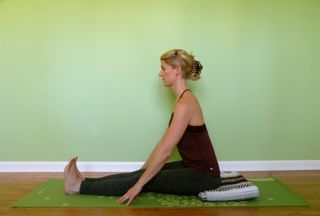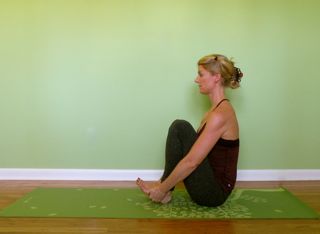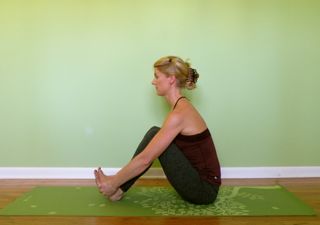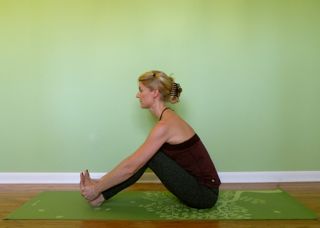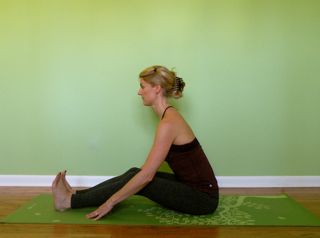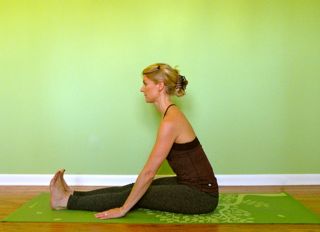16 Jan 10 Misconceptions about Yoga – Part 1
You Have to Be Flexible To Practice Yoga, And You Better Be Good At It Too
or: 10 Misconceptions about Yoga
As a Yoga Teacher, I notice that there seem to be a lot of misconceptions about yoga. I can list at least ten of them.
This week I will elaborate on the premise that the practice of yoga is not for everyone. Or that is what most people seem to think. When asked what I do for a living, my response is often countered by a “Oh, I can’t touch my toes, so I can’t do yoga”, or “Yeah I tried it once, but I’m not good at it”.
The good news is: there is no such thing as being good at yoga. If you can breathe (and unless you have some serious health challenge going on, you obviously can), you are good at yoga. And like anything, you’ll get better with practice. Who is able to score a hole-in-one the first time they play golf? If you run into a yoga teacher that expects you to stand on your head in your first class (or even when it’s your 500th class, for that matter), you may want to look for a different teacher (no offense).
Yoga is not a competition (although there are some yoga traditions that seem to think it is a good idea to throw yoga postures into a championship. You may guess what my opinion is about that, but that’s a different story). If that were true, life is a competition. And, unless I missed the memo, I don’t believe that is the case. Yoga is a way of living, a philosophy, much more than it is about physical exercise. Yes, it is challenging not to judge, or to be non-violent to yourself. Given the number of people I hear being their own biggest critic, it seems almost impossible to adhere to these basic yogic observances. Yet, every day is an opportunity to practice. And a little practice goes a long way.
So you decided to give it a try: now you’re in a yoga class, the teacher is guiding you into a forward fold, your toes seem to be miles away, and no way you are able to touch your forehead on your knees. What to do? Run! (Just kidding…). You take a deep breath, and do your best to accept where your body is at in that moment. Certainly don’t look over to your right to the girl in the Lululemon outfit that is bent in halves. You don’t know her story. Maybe she stars in Cirque du Soleil and was born with her legs behind her head. Don’t compare yourself to anyone else. Remember: yoga is not a competition. And unlike what certain magazines make you believe, it is not about what your pose looks like either. As Donna Faulds writes so beautifully in her poetry book Go In and In: “Yoga is an invitation to explore, not a command performance.” When you are breathing consciously, and you feel that the position you’re in is eliciting the Prana (i.e. Life Force) in your body to flow, you are doing it exactly right (if there is even such a thing.
To continue the idea that it is not important what your yoga posture looks like, I’d like to give you some suggestions on how to practice a meaningful forward bend without having to touch your toes. (With meaningful I mean here: a way to flex the hips forward so that you are getting a safe and deep stretch of your back body without compromising your lower back.)
Sit on the edge of a folded blanket, just with your Sitz bones, to help the pelvis tilt forward:
To get into a Forward Fold with a straight spine more easily, here are 5 steps to do it.
1. Sit with a straight spine and pull your thighs against your belly while holding your feet on the outside:
2. Begin “walking” your feet forward, while keeping your belly on your thighs, your spine straight and holding on to your feet:
3. When you feel that your belly is coming of your thighs, pause.
4. Let go of your feet. Keep your spine where it is at, and slowly straighten your legs:
5. Gently engage your legs, flex your feet and let your toes point upwards. Keep your spine straight, shoulders down and reach your chest towards your toes. Now you are in a safe and meaningful Forward Fold without overstretching the spine. (And no need for frustration that your hands are not touching your toes!):
My hope is that this blog post has inspired you to give yoga a(nother) try. Next week, I will talk about the misconception that only when you are able to do “advanced” poses, you will get a real benefit of practicing yoga.
